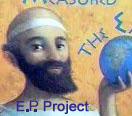ERATOSTHENES PROJECT
Challenge project for the Cape Cod Astronomical Society

Why the Eratosthenes Project?
It didnít really matter what subject we picked. I really wanted to give the members the opportunity to
experience the excitement of doing science. Measuring the Earth just seemed outlandish enough that I doubt anyone
in the group has tried it before.
But doesnít that put many of us at a disadvantage? Only a few members are engineers or scientists.
Who knows? It might even be an advantage. Common knowledge is not always right. Most tasks can be
accomplished in a number of different ways. In other words, knowing too much can limit our thinking.
Donít you have to have a knack for science? Doesnít it require a special kind of thinking?
It requires the same kind of thinking that we all (or most of us) use when deciding how to safely cross a street.
We look around, we draw on our knowledge of what vehicles can do, and we make decisions.
People have said, ďI donít know how to get started.Ē What would you suggest?
I can tell you what works for me. The first and most important task is to define exactly what we are trying to do
and any constraints the task may have.
Would you please give us an example of what you mean?
In this case, the task is to determine the diameter of the earth. The constraints are that we can only use task
specific information that was available to people 2200 years ago. For example, they knew that the sky behaved as
though the stars were on a sphere rotating relative to the Earth around an axis. They knew this because of the way
the map of stars repeated itself through the heavens as the sky and Earth rotated relative to each other. They also
knew that the axis of the Earth was on a tilt of 23 degrees relative to the axis of the path of the Sun on that Celestial
Sphere.
But there is no constraint on devices that we use to measure things as long as those devices do not depend on the diameter of the Earth for their operation. So we cannot use a GPS to do our measurements. But plumb bobs, optical
instruments, automobile odometers, magnetic or gyroscopic compasses, etc. are all legal.
You really donít want to tell us how to do this, do you?
That would take away much of the fun. Besides, there are a number of very good ways to approach the
problem.
What is the best advice would you give to the EP group.
Question everything. The way science is taught in schools today, most people think we understand how most
things work. We scoff at the things that were misunderstood in the past without realizing that in many ways we still
operate out of ignorance.
So what do you expect of the EP group
What I am hoping for is that the people in the group will brainstorm (i.e. - share thoughts) and work together
to get an answer. Getting an accurate answer is nowhere as important as understanding the reasons for any error
there might be in the final result of the project and knowing what would be required to eliminate that error. But mostly
it will be fun for people to be doing things rather than just reading about them.
PLEASE USE THE BLOG BUTTON (at top off this page) TO FOLLOW AND JOIN US IN THIS DISCUSSION

View My Guestbook
Sign My Guestbook
Eratosthenes Project - WSO Method 4 (Werner Schmidt Observatory) (2/21/09)